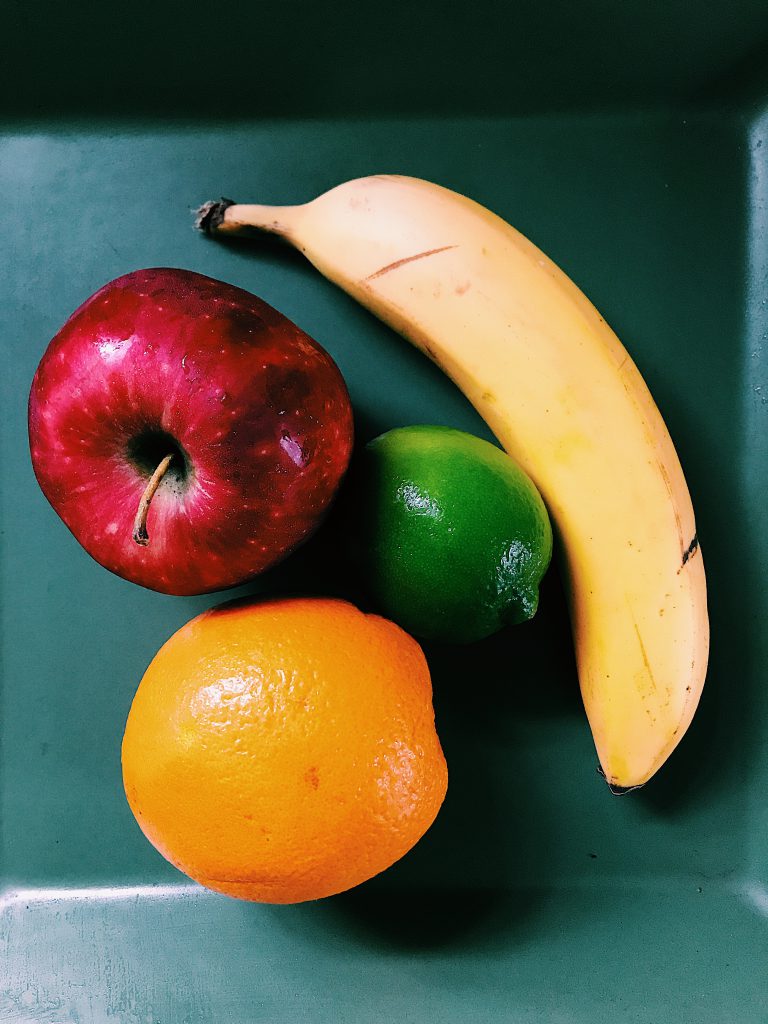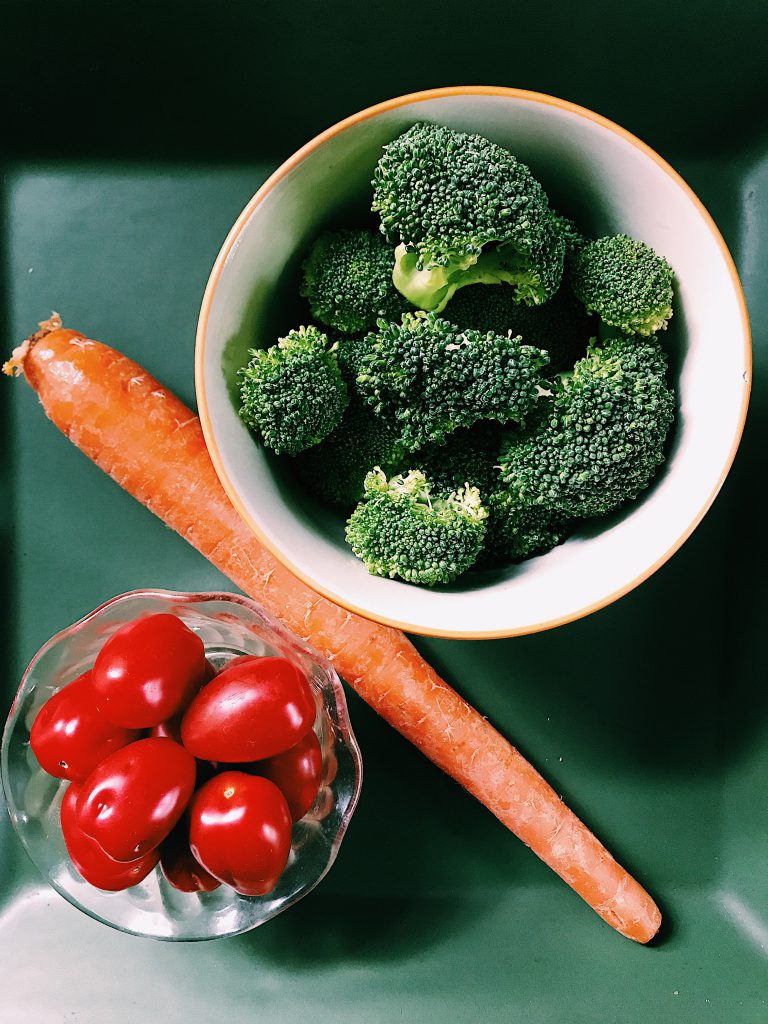[cmsmasters_row data_width=”boxed” data_padding_left=”3″ data_padding_right=”3″ data_top_style=”default” data_bot_style=”default” data_color=”default” data_bg_position=”top center” data_bg_repeat=”no-repeat” data_bg_attachment=”scroll” data_bg_size=”cover” data_bg_parallax_ratio=”0.5″ data_padding_top=”0″ data_padding_bottom=”50″][cmsmasters_column data_width=”1/1″][cmsmasters_text animation_delay=”0″]
I zone out a lot when I eat. I’m usually thinking about where my food came from, what it used to look like before I cooked it (or peeled it, or chopped it, or picked it), and how it can be SO GOOD. So I guess it’s not zoning out but some form of mindful eating, which makes me feel better. I mostly do this with fruits and vegetables. I have a garden in my backyard and every year when things start to grow, I can’t believe it. The strawberry plants I have I don’t even do anything with and around May they just pop up like, “hey, we are going to start to come out now so clear out some room.”
This post is going to discuss some background on preparing and storing fruits and vegetables as well as some science! All things I like to think about when I eat 🙂
First up, fruit.

Fruit is the seed-bearing structure in a flowering plant. Sometimes, we eat fruits as vegetables (tomatoes, avocado) because that just makes more sense. It’s recommended that people consume 2 cups per day of fruits.
Storage
Refrigerate fruits that are ripe. Ripening fruits release ethylene gas that triggers ripening in nearby fruits. So one bad apple can ruin the whole fruit bowl! Melons, bananas and apples emit the most ethylene gas. Refrigerating will not stop the gas, but it will slow it. Fruits also go through enzymatic browning, which means enzymes are released in response to phenolic substances in fruit. It’s basically just a chemical reaction, but it happens when fruit is cut or damaged (eg. browning avocado or banana, or brown spot on an apple). An acid drip will inhibit this reaction, so if brown grosses you out you could rub a lemon wedge on your cut fruit!
Preparation
The simplest preparation of fruit is to wash and eat. Sometimes there are things that are more fun! You could make a compote, which is a fruit sauce made from fruit and sugar syrup for breakfasty/dessert foods. You could also swing to the dinner side and make a chutney, which is fruit, vinegar, sugar and spices used as a condiment. You could also make jam/jelly/marmalade/preserves!
Next up, veg.

OK, yes, I did technically include a fruit (tomato) in the photo. Truth be told, I have never met someone that REALLY truly considers a tomato a fruit (for consumption purposes) so here we are. Vegetables are edible plants, including flowers, seeds, stems, roots, leaves, and tubers. It is recommended that people consume 2.5 cups of vegetables per day.
Storage
Most vegetables continue to ripen based on their storage conditions, and most vegetables should be refrigerated. Exceptions: potatoes/squash/onions. These guys like a temperature around 60-70 degrees (F) and they like it dark and dry. If you refrigerate raw potatoes, the starch will turn to sugar.
*Note about potatoes* If exposed to light, potatoes will produce a toxin called solanine. Have you ever Googled if green potatoes are safe? They’re not! Solanine can cause GI and nervous system problems if ingested, it’s not killed by heat and does not dissolve in water. Just keep your taters out of the light.
Next, avoid washing vegetables before storing! This goes for fruits too. They’re simply fresher if you wait until right before you’re going to use them.
Preparation
You could go by the wash and eat method, but most vegetables we consume are cooked. Cooking methods can either be dry heat or moist heat.
Dry heat – grilling, roasting, broiling, baking, sauteeing, stir frying
Moist heat – steaming, blanching, boiling, simmering, braising, poaching
If you’re cooking green vegetables by moist heat method with a lid, remove the lid to preserve the color of green vegetables. Keep the lid on to preserve the color of red! Baking soda added to water also preserves color, but I think it messes with the texture and it decreases the nutrient value. Vitamins A, C and B can be destroyed by heat. Vitamin C can also leach out into cooking water.
My favorite way to eat vegetables is roasting. I roast everything in the cooler months! In the warmer months I’ll steam a lot or eat raw in salads if I don’t want something hot anyway. Even if it’s 100 degrees I still may turn my oven on to roast.
Color of fruits and veggies
Colors of fruits and vegetables are produced by pigments in the structure of the plant. Don’t confuse color with phytochemicals, though colors are meaningful.
Yellow/orange-red: carotene (carrots; carotenoids)
Red-blue/purple: anthocyanin (blueberries; flavonoids)
Pale yellow/colorless: anthoxanthin (potatoes; flavonoids)
Clear, white, brown: tannin (dates; flavonoids)
Green: chlorophyll (lettuce)
[/cmsmasters_text][/cmsmasters_column][/cmsmasters_row]
